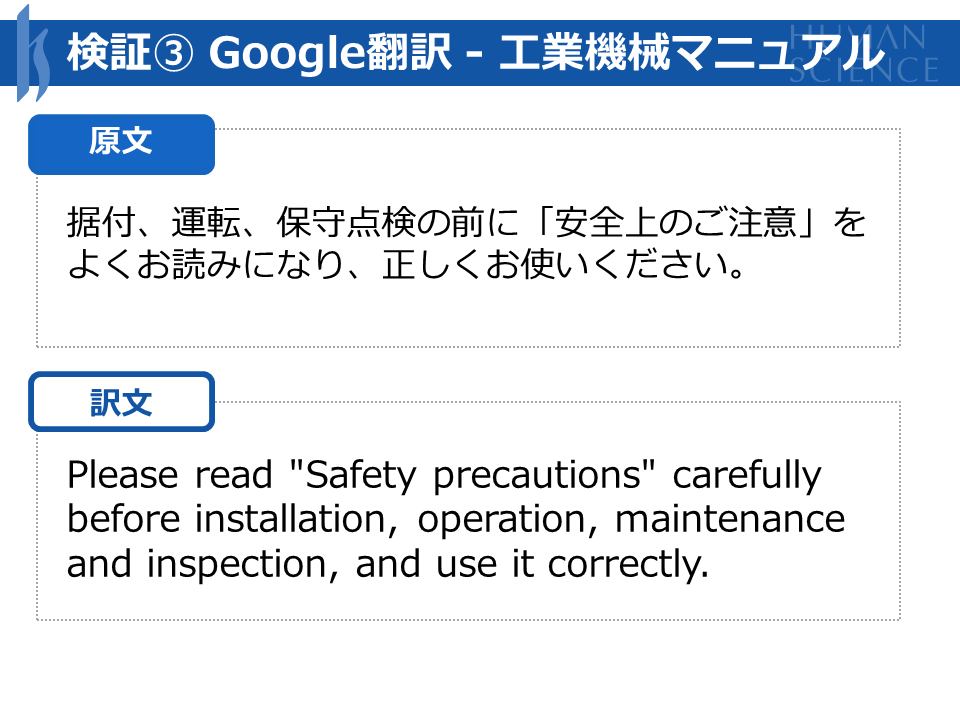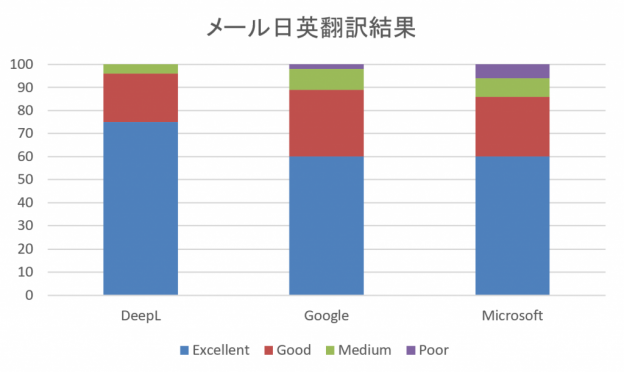In the previous blog, we introduced examples and challenges of translating IT manuals using GNMT. This time, we will report the verification results of translating user manuals in the fields of medical devices and industrial machinery that Human Science has handled in the past using GNMT.
Medical Devices (English to Japanese)

In the case above, adherence to the glossary becomes an issue.Within this short sentence, the translation of Anion fluctuates between "anion" and "negative ion".It is necessary to unify this according to the glossary.It is also necessary to check and correct whether the "de aru" style is consistent with other parts of the document.
Machine Operating Manual (Japanese-English)

In this case, it is necessary to verify whether the translation of the reference title "Safety Precautions" is indeed "Safety Precautions."It is also necessary to check for compliance with the glossary and style guide.
Summary
Regardless of the translation genre, whether it be IT, medical, or mechanical, it is necessary to verify glossaries, style guides, and references. The example sentences discussed last time and this time are both correctly translated in terms of meaning, but as the original text becomes longer, issues such as mistranslations, omissions, and repetition of terms arise. Therefore, human verification and correction of the translated text's meaning, known as "post-editing," is also necessary.
The above issues can be broadly divided into two types.Those that can be solved mechanically and those that require human intervention.
We can mechanically comply with the glossary and style guide.On the other hand, while some automation is possible for verifying references, unifying writing styles, and confirming the meaning of translations, human post-editing is necessary.In our human science solutions, we combine technology and human effort to solve each issue in a one-stop manner.
Related Articles
Human Science Machine Translation Solutions


























